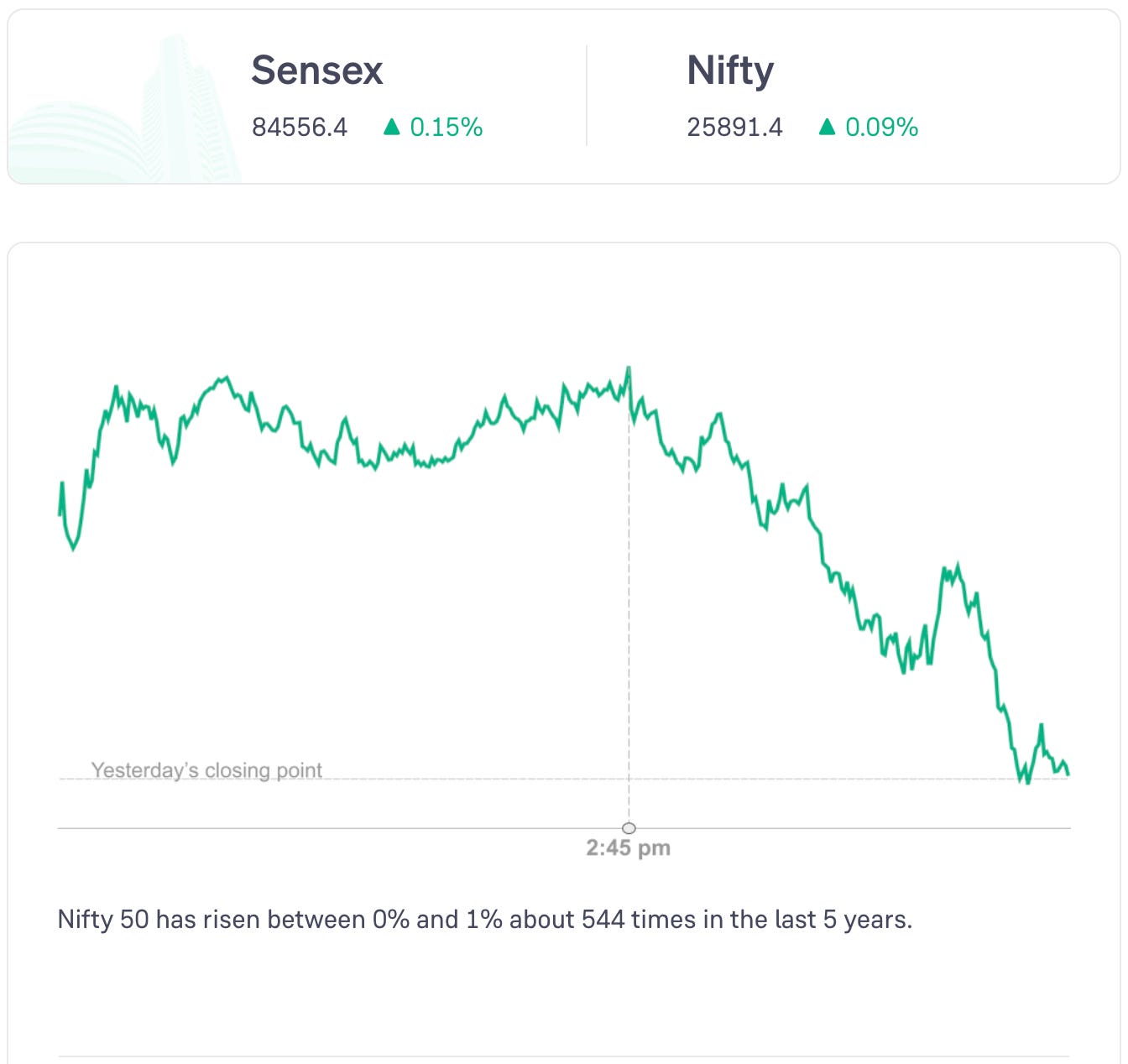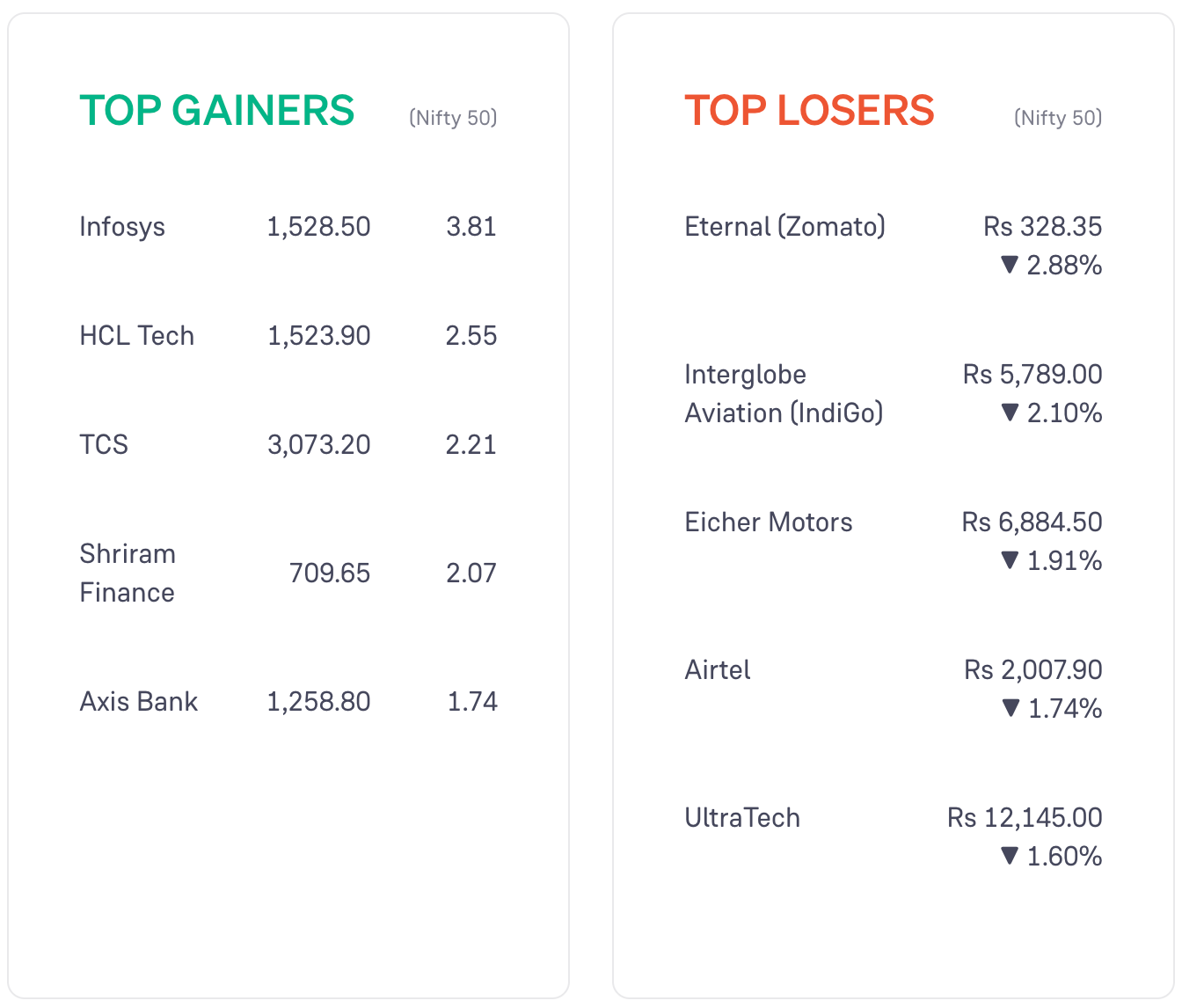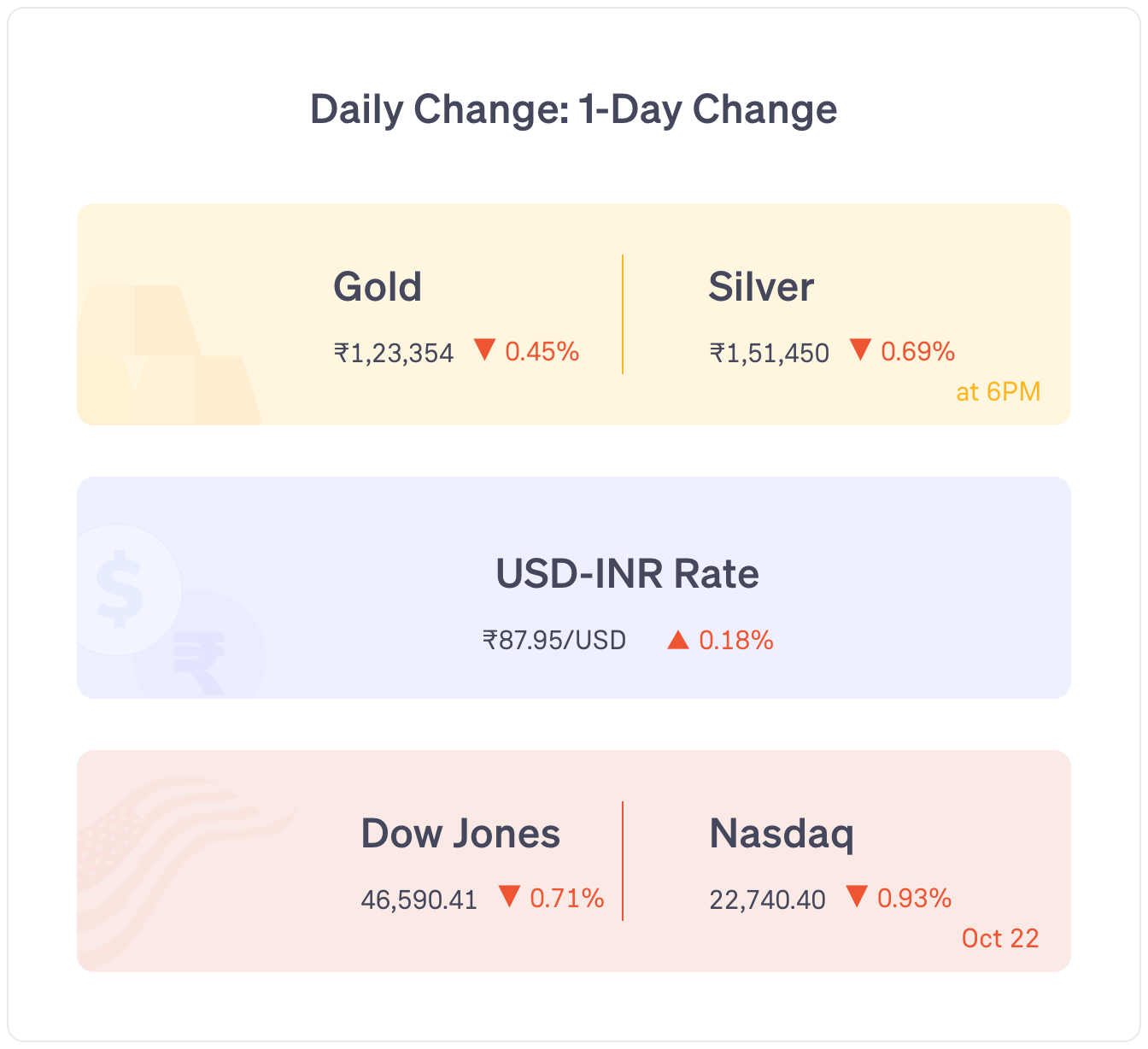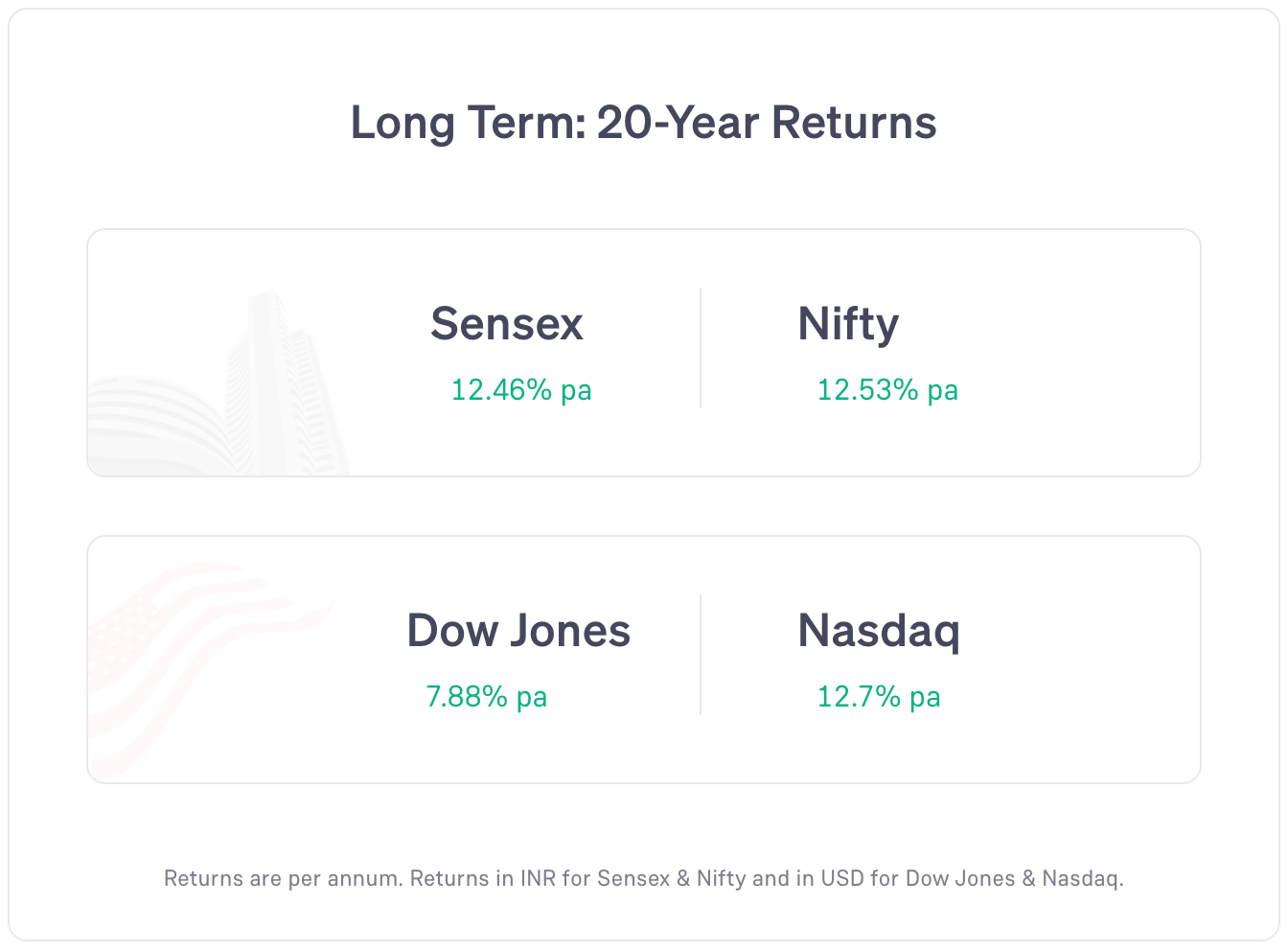New rules for AI content, equity funds see Rs 30,421 cr inflow, HUL Rs 19 dividend, & more — Groww Digest
Thursday, 23 October 2025
Markets opened significantly above Tuesday’s closing point.
Nifty 50 fell in the second half of the day and closed almost flat.
IT stocks and private bank stocks rose the most today. Oil and gas stocks and healthcare stocks fell the most.
Global markets: US markets fell. Most Asian markets and European markets rose (as of 6 pm IST).
News
The Ministry of Electronics and Information Technology has amended the IT Rules, 2021, mandating that all artificially generated content must be clearly labelled both visually and within its metadata to ensure transparency and accountability.
‘Equity mutual funds saw a net inflow of Rs 30,421 crore in September (compared to Rs 33,430 crore in August). Debt funds saw a net inflow of Rs 1.02 lakh crore in September (compared to a net outflow of Rs 7,979 crore in August): AMFI
The Defence Acquisition Council approved defence procurement proposals worth Rs 79,000 crore to enhance the capabilities of the Army, Navy, and Air Force.
Stocks Updates
Torrent Pharma: received CCI approval to acquire a controlling stake in J.B. Chemicals & Pharmaceuticals from KKR.
Hindustan Unilever: net profit rose 3.6% year-on-year to Rs 2,685 crore in the July-Sept quarter. Dividend announced: Rs 19 per share. Record date: 7 Nov.
Colgate-Palmolive: net profit fell 17% year-on-year to Rs 328 crore in the July-Sept quarter. Dividend announced: Rs 24 per share. Record date: 19 Nov.
Bharat Electronics: received orders worth Rs 633 crore from Cochin Shipyard for sensors, weapon equipment, fire control system and communication equipment.
Hero Moto: entered the UK market through a partnership with MotoGB, launching its Euro 5+ Hunk 440 model and expanding to 51 countries.
Cipla: signed an agreement with Eli Lilly to market a 2nd brand of Tirzepatide in India under the name ‘Yurpeak’ for diabetes and obesity treatment.
Word of the Day
Non-Performing Asset (NPA)
It is a loan given by a bank that the borrower fails to repay on time
For a bank, a loan is an asset. If the borrower defaults or stops making payments, the loan stops generating income for the bank — it becomes an NPA.
Most loans get classified as NPAs if they remain unpaid for 90 days or more.
A high number of NPAs are a problem for banks because they reduce profits and affect the bank’s ability to lend to others.
6 Day Course
Theme: commodities trading
Day 4: Thursday
Now, let’s talk about arbitrage traders in commodities markets.
This is similar to stock markets — they notice price differences of the same commodities and buy/sell at the same time.
Let’s say crude oil costs $109 in one exchange and $108 in another.
They will buy it from the cheaper exchange while selling on the more expensive exchange.
Last and most interesting are the traders who hedge. These traders are not trying to profit. They are trying to reduce their risk.
Say a crude oil producer fears the price of oil will fall.
They will agree to sell at a fixed price in the future. This locks in the price at a future date.
If the price falls, they will still get the higher price for their crude oil.
On the other hand, if the price shoots up, they will still have to sell the crude oil at the fixed price — they cannot profit from the higher price.
This allows hedgers to stabilise their future cashflows. All sorts of producers and consumers make use of hedging strategies to bring in stability in their operations.
Features Question
Q. “I was checking SBI gold fund expense ratio is 0.1 and expense ratio of sbi gold etf is 0.70. Why this huge difference? Is there any hidden cost in gold fund which I should know?”This is a good catch.
There’s nothing hidden. You just need to understand how both work.
When you see returns of a mutual fund or an ETF, it is after the expense ratio is deducted. You do not need to pay the expense ratio later.
Something to understand here is that most mutual funds do not invest in gold directly. They simply invest in ETFs that buy gold.
+ 0.7% expense ratio deducted by ETF that invests in physical gold.
+ 0.1% expense ratio deducted by mutual fund that has invested in that ETF.
Why is there a huge difference in expense ratio?
The gold ETF is investing in hard gold assets. This requires more effort, operations, and therefore expenses.
Hence, the ETF’s expense ratio is higher.
The gold mutual fund is not investing in physical gold. It is just investing in gold ETFs.
So all it needs to do is allocate money to the right ETFs. It does not need to buy, store, or handle real gold.
Hence, its costs are lower. And therefore, the expense ratio is also lower.
Did you like this edition?
Leave a feedback here!






Good information